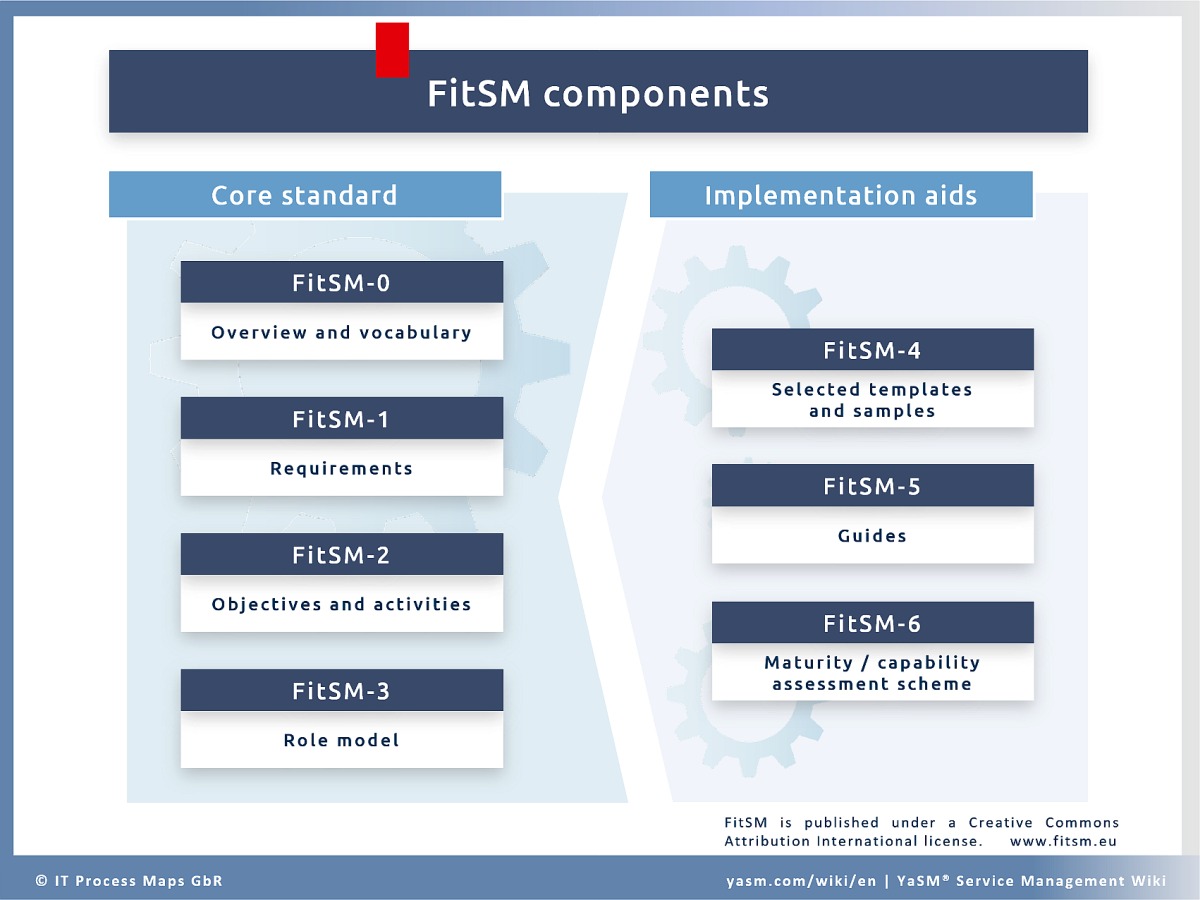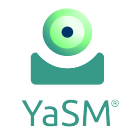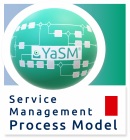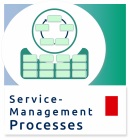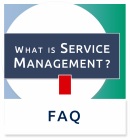FitSM
FitSM is a lightweight standards family aimed at supporting the implementation of IT service management (ITSM) [1]. The development of FitSM (Federated IT Service Management) was supported by the European Commission, and it is based on the same time-tested principles that we find in other service management frameworks and standards, such as ITIL® and ISO 20000.
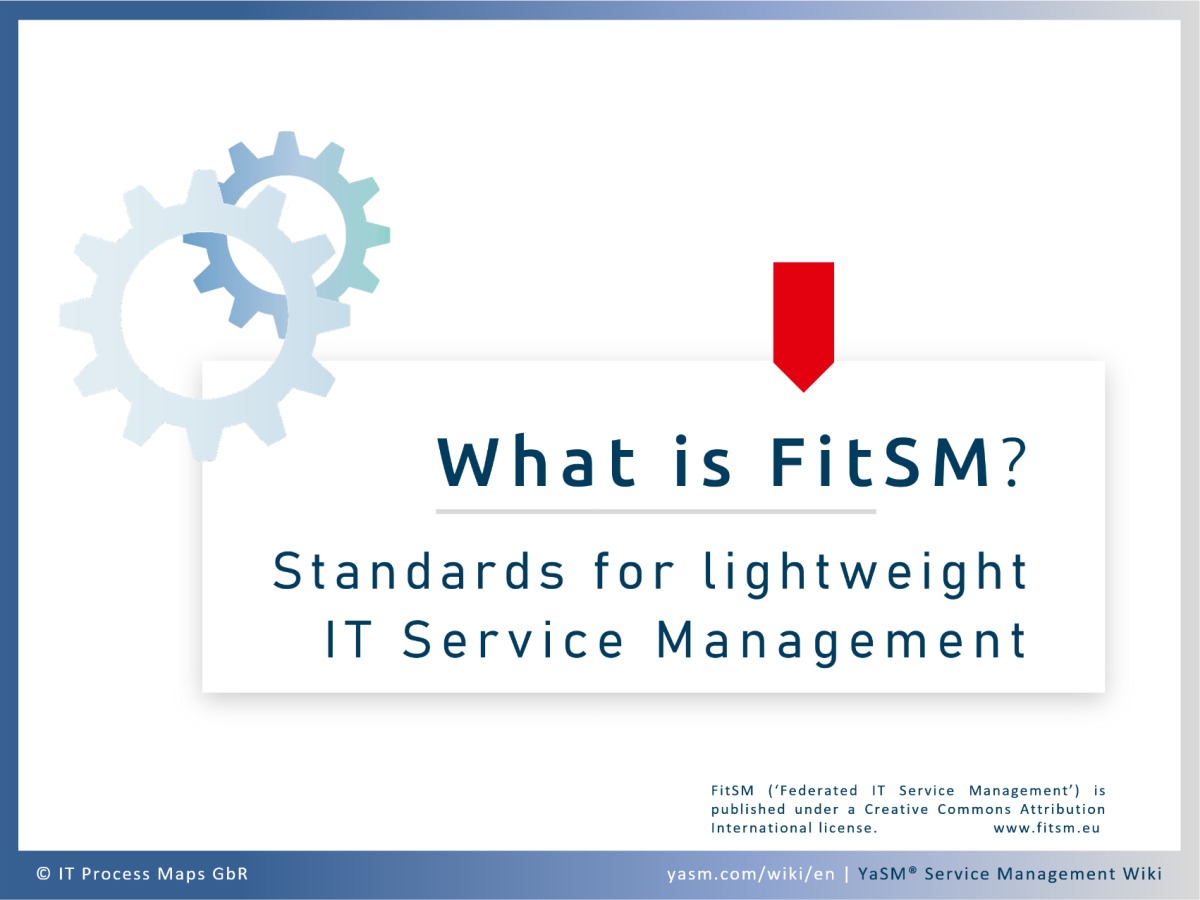
Standards for lightweight IT Service Management.
Overview
To set itself apart from other frameworks, FitSM aims to focus on the essentials and provide a "clear, pragmatic, lightweight and achievable standard that allows for effective IT service management (ITSM)".
Though the authors introduce it as a standard, FitSM is not published by an established standardization organization such as ISO. In addition to requirements for a service management system (SMS), FitSM includes guidance that organizations can adapt to their specific needs, as well as implementation advice and a maturity assessment scheme (see below: FitSM components).
FitSM is free to use for everybody. The FitSM standard and related material published by the FitSM working group are licensed under a Creative Commons International License.
Video: FitSM - Lightweight service management
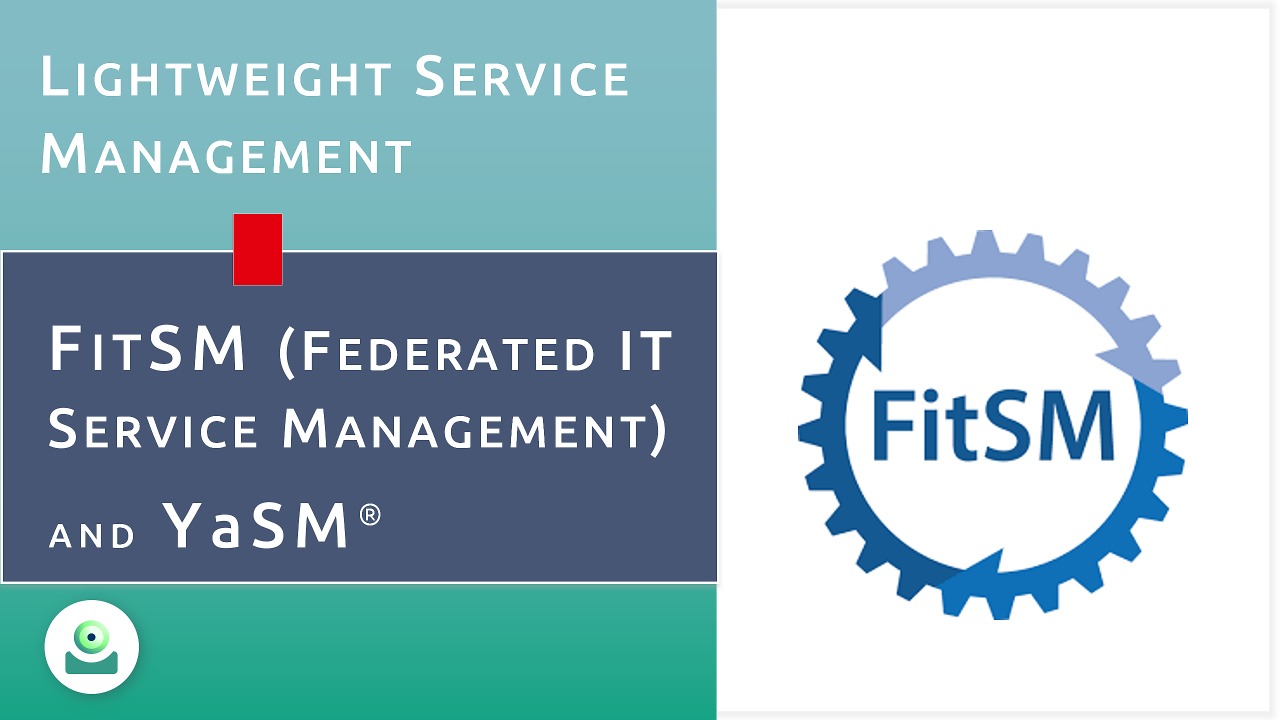
To learn more about FitSM, start our video where Stefan Kempter gives you an overview of this lightweight service management standard and how FitSM helps organizations improve their service management practices.
Watch the video:
- Video: What is FitSM (Federated IT Service Management)? (8:20 min.)
FitSM components
As many ISO standard families, FitSM is made up of several documents, defining requirements and providing guidance on implementing a service management system:
Core standard
| Part | Contents |
|---|---|
| FitSM-0: Overview and vocabulary | An overview of the FitSM family and a common vocabulary, including an introduction to FitSM's 14 core processes for IT service management (ITSM). |
| FitSM-1: Requirements | Requirements for a service management system (SMS), grouped into two categories:
|
| FitSM-2: Objectives and activities | Guidance that helps organizations meet the FitSM-1 requirements:
|
| FitSM-3: Role model | Initial guidance on setting up a landscape of roles and responsibilities in support of meeting the FitSM-1 requirements, including definitions of
|
Implementation aids
| Part | Contents |
|---|---|
| FitSM-4: Selected templates and samples | Document templates intended to form the basis of documentation for those implementing service management following the FitSM approach, for example
|
| FitSM-5: Guides | Advice on key aspects of good service management and related topics, such as
|
| FitSM-6: Maturity / capability assessment scheme | An Excel tool for the guided assessment of the maturity of a service management implementation. |
FitSM processes
FitSM is organized around a simple set of 14 ITSM processes that will look familiar to anyone who knows ITIL or some other service management framework:
- Service portfolio management (SPM)
- Service level management (SLM)
- Service reporting management (SRM)
- Service availability and continuity management (SACM)
- Capacity management (CAPM)
- Information security management (ISM)
- Customer relationship management (CRM)
- Supplier relationship management (SUPPM)
- Incident and service request management (ISRM)
- Problem management (PM)
- Configuration management (CONFM)
- Change management (CHM)
- Release and deployment management (RDM)
- Continual service improvement management (CSI)
For each of these processes, FitSM defines specific requirements (FitSM-1: Requirements) and provides additional guidance (FitSM-2: Objectives and activities).
Comparison: FitSM and other service management frameworks
Although FitSM has been available since 2015, it has mostly remained in the shadows of ITIL, the most popular service management framework that was first published in the 1980s. But more recently there are signs of increasing interest in FitSM as a somewhat lighter alternative to ITIL.
This is because ITIL has grown ever more complex over the years. While earlier editions of ITIL specified "best-of-class" processes for organizations to adopt, the latest edition of ITIL 4 describes a service value system as "all the components and activities of the organization that work together as a system to enable value creation".
This departure from process-orientation gives organizations more freedom to design tailor-made processes. But many organizations, and especially smaller ones, find that ITIL 4 trainings now often fail to provide their employees with actionable knowledge in the basic service management disciplines, such as incident, problem, configuration and change management.
Against this backdrop, FitSM is based on the same key ideas that underpin ITIL, and a look at the FitSM terms and definitions confirms that they are closely aligned with the ITIL glossary. FitSM, however, describes itself as a "more reduced and lightweight set of processes that can be considered a valid first step towards implementing the full set of processes recommended by other frameworks such as ITIL".
A complete mapping of the FitSM processes to ITIL is available at the FitSM website.
FitSM and ISO 20000
ISO/IEC 20000 is the international standard for service management that specifies requirements for an organization to establish, implement, maintain and continually improve a service management system (SMS). The requirements include the planning, design, transition, delivery and improvement of services to meet the service objectives and deliver value.
FitSM was designed to be compatible with ISO 20000 and is based on the same key ideas and principles. As a "lightweight" standard, however, FitSM is more compact and puts an emphasis on keeping things simple.
For organizations looking to get certified against ISO 20000, FitSM is a good starting point, as it defines minimum requirements for a sound platform of good service management practices. This approach can be expanded if and as required to meet the full set of ISO 20000 requirements.
FitSM and YaSM
While FitSM provides documents with requirements and supporting guidance, YaSM provides a ready-to-use service management process model in popular formats, such as Visio® and ARIS™:
The process model includes a complete set of templates for service management processes and documents.
With these templates, organizations that need to design their service management processes save time and effort, as they adapt existing content and do not have to start from nothing.
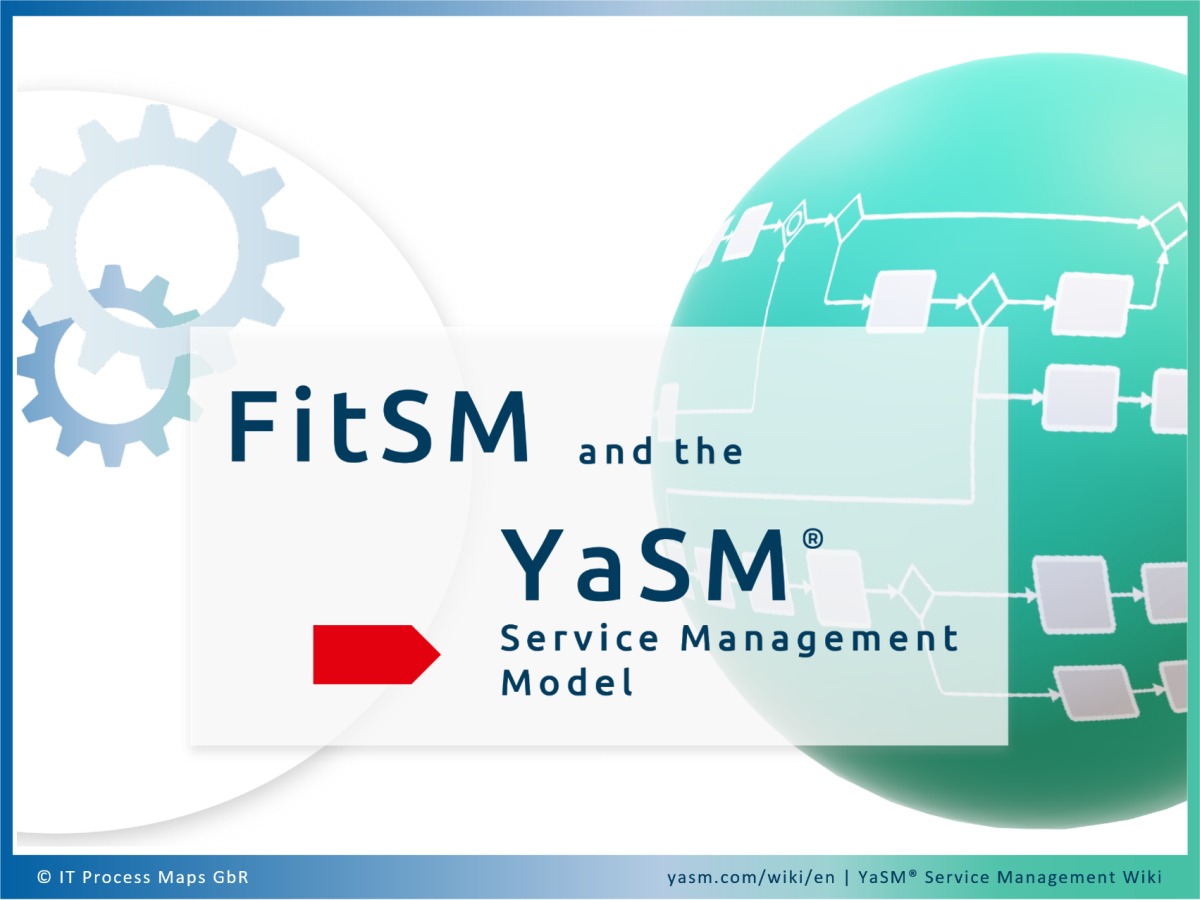
➜ FitSM requirements and YaSM process templates.
Since both FitSM and YaSM aim to provide clear and pragmatic advice and have their roots in the traditional service management frameworks such as ITIL, there is a good match between FitSM and YaSM.
- What are the differences between YaSM and FitSM?
- FitSM requirements and related YaSM processes and templates
History of FitSM
FitSM was first created by the FedSM project as part of the "7th Framework Program for Research and Technological Development" sponsored by the European Union. The project originally aimed to provide FedSM's client organizations with service management best practices that are better suited to smaller organizations than the traditional frameworks such as ITIL.
Towards the end of the project, the project consortium realized there was considerable interest in its lightweight ITSM approach, and started publishing project deliverables under the FitSM name.
Since the end of the project in 2015, FitSM and the associated certification program have been owned and maintained by the FitSM working group at ITEMO (IT Education Management Organisation e. V.).
FitSM qualifications and certifications
FitSM certification program
ITEMO has developed a FitSM qualification scheme. The certification program is made up of three levels: Foundation, Advanced and Expert.
- The foundation qualification teaches fundamental knowledge of FitSM. Foundation training and the certification exam can be delivered in just one day.
- The advanced level consists of two parts and provides in-depth knowledge in two areas: Service Planning & Delivery (SPD) and Service Operation & Control (SOC).
- The expert level is the top qualification in FitSM.
ITEMO has teamed up with ICO (International Certification Organization) and APMG International for conducting exams and issuing personal certificates.
ICO and APMG are also in charge of accrediting FitSM training organizations, which provide training courses at the foundation, advanced and expert levels. Accredited FitSM training providers are listed on the APMG and ICO websites.
Candidates taking the advanced and expert level exams are required to attend a training course at an accredited training provider.
All official FitSM training slides are available for download on the FitSM website.
FitSM organizational certification
The FitSM working group at ITEMO is currently piloting an "organizational level" FitSM certification as a formal demonstration of FitSM implementation in accordance with the FitSM-1 standard requirements. This will allow organizations to get certified against the FitSM standard.
Where can I learn more about FitSM?
If you want to know more about Federated IT Service Management, watch our introductory video on FitSM, and please visit the FitSM website, where you will find:
- Introductory information
- FitSM FAQs
- FitSM success stories
- Comparisons of the FitSM process model to ITIL and ISO 20000
- All FitSM documents and training materials as free downloads.
Notes and references
[1] This page features content from the FitSM website published under a Creative Commons Attribution 4.0 International (CC BY 4.0) license.
By: Stefan Kempter ![]() and Andrea Kempter
and Andrea Kempter ![]() , IT Process Maps.
, IT Process Maps.
Definition › Video › FitSM components › FitSM processes › FitSM and other service management frameworks › FitSM qualifications and certifications

